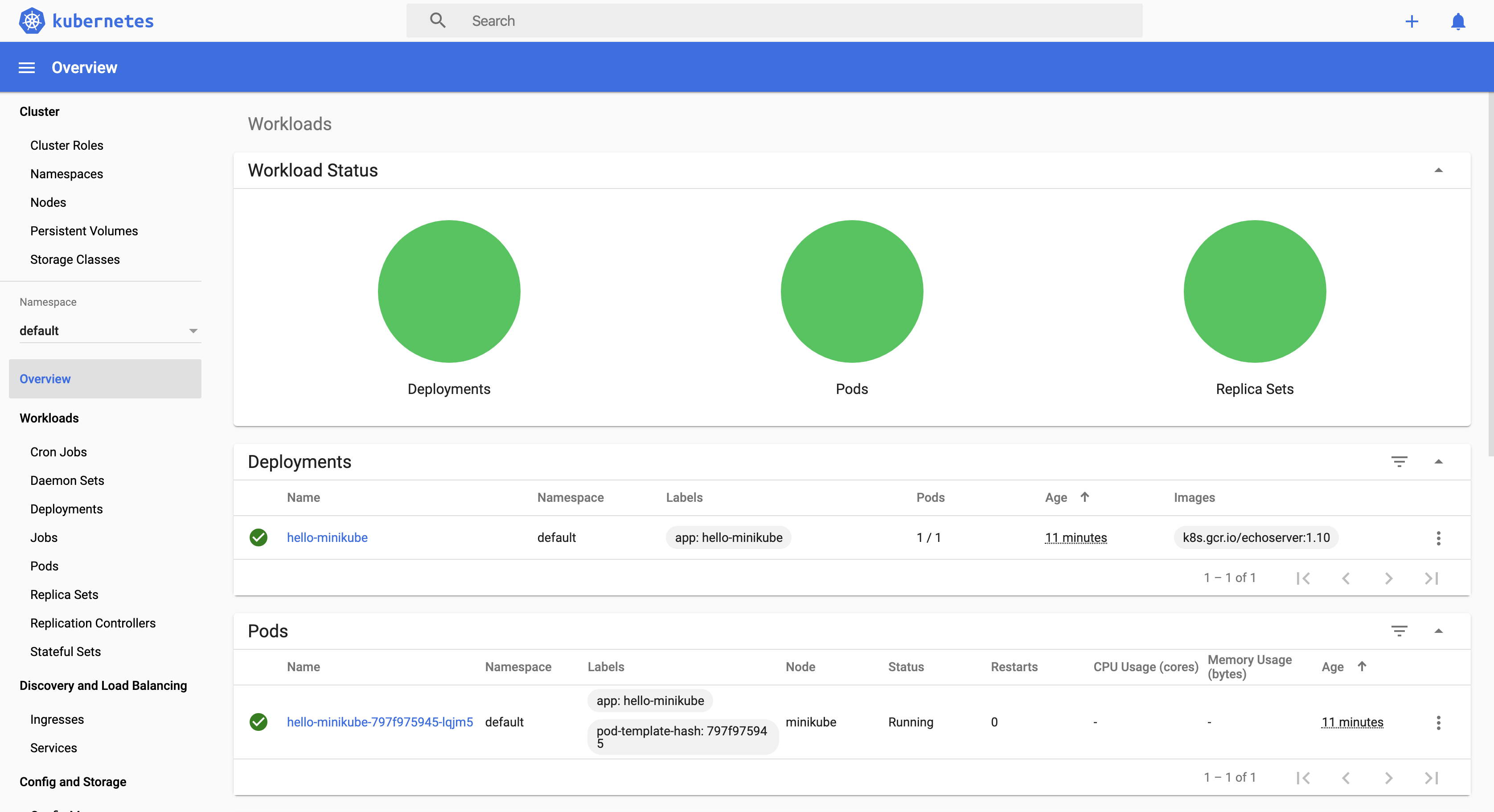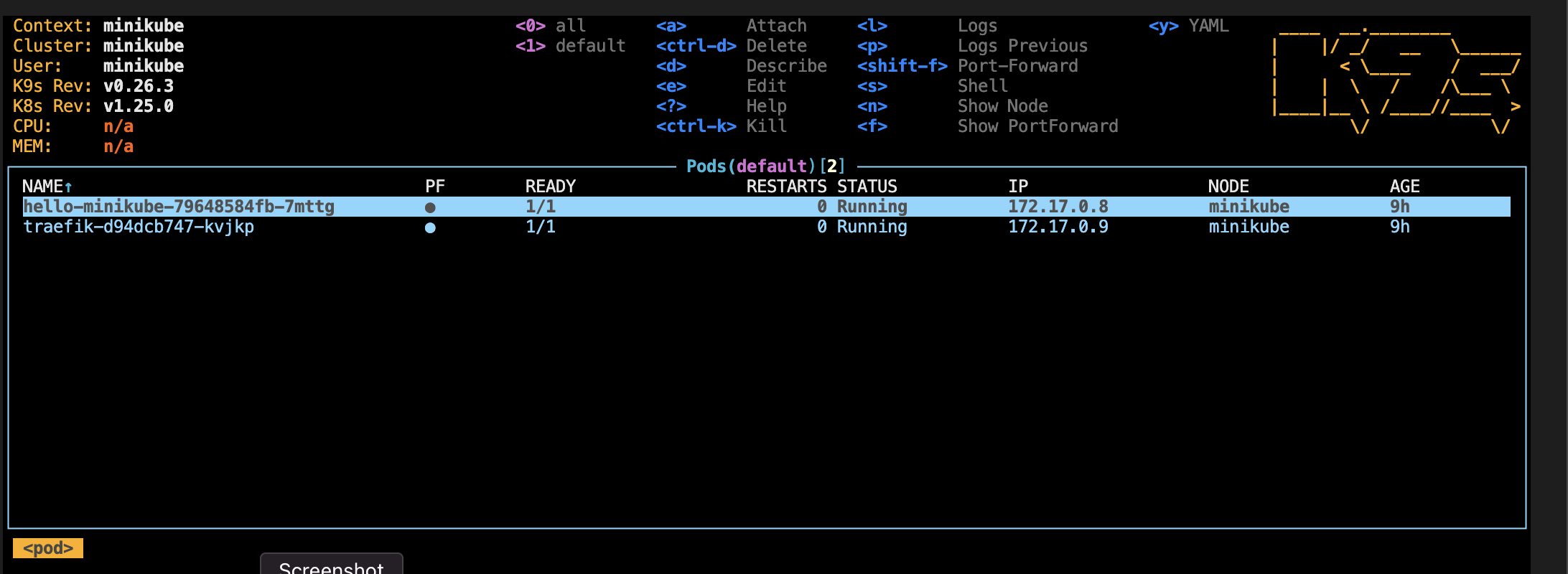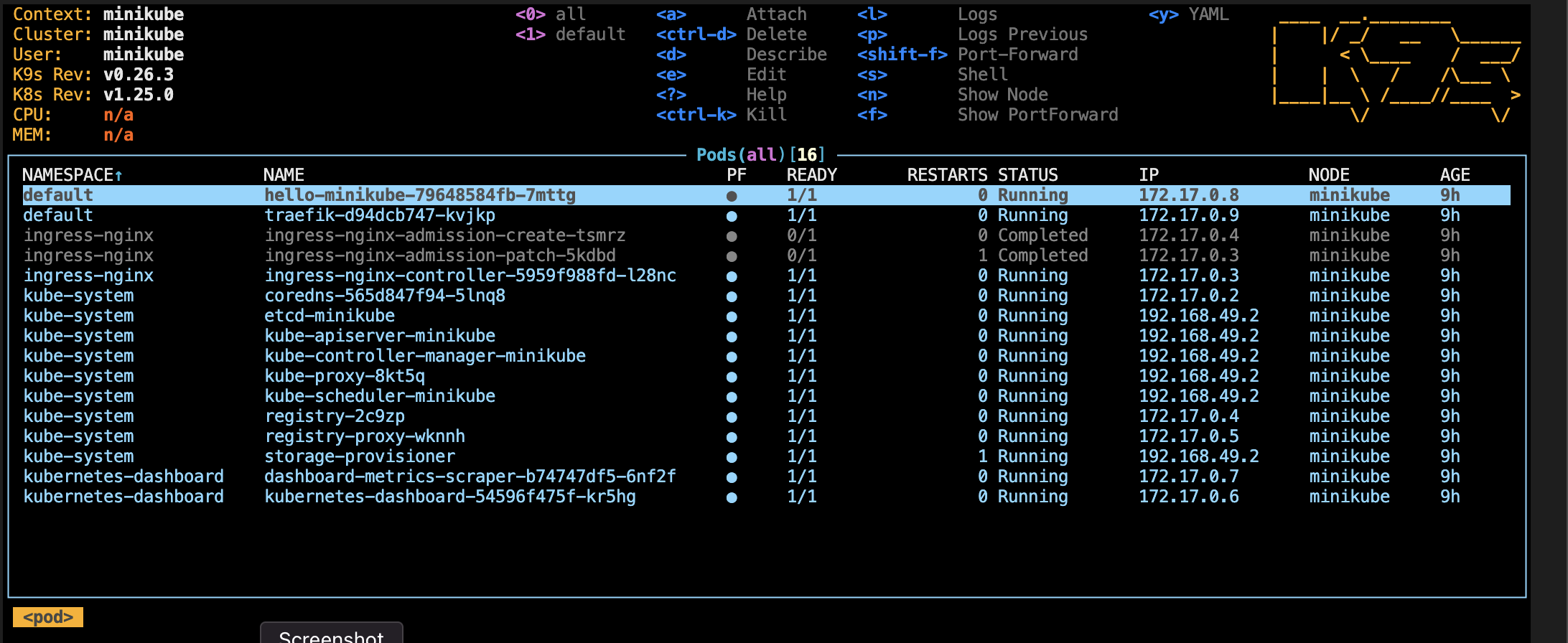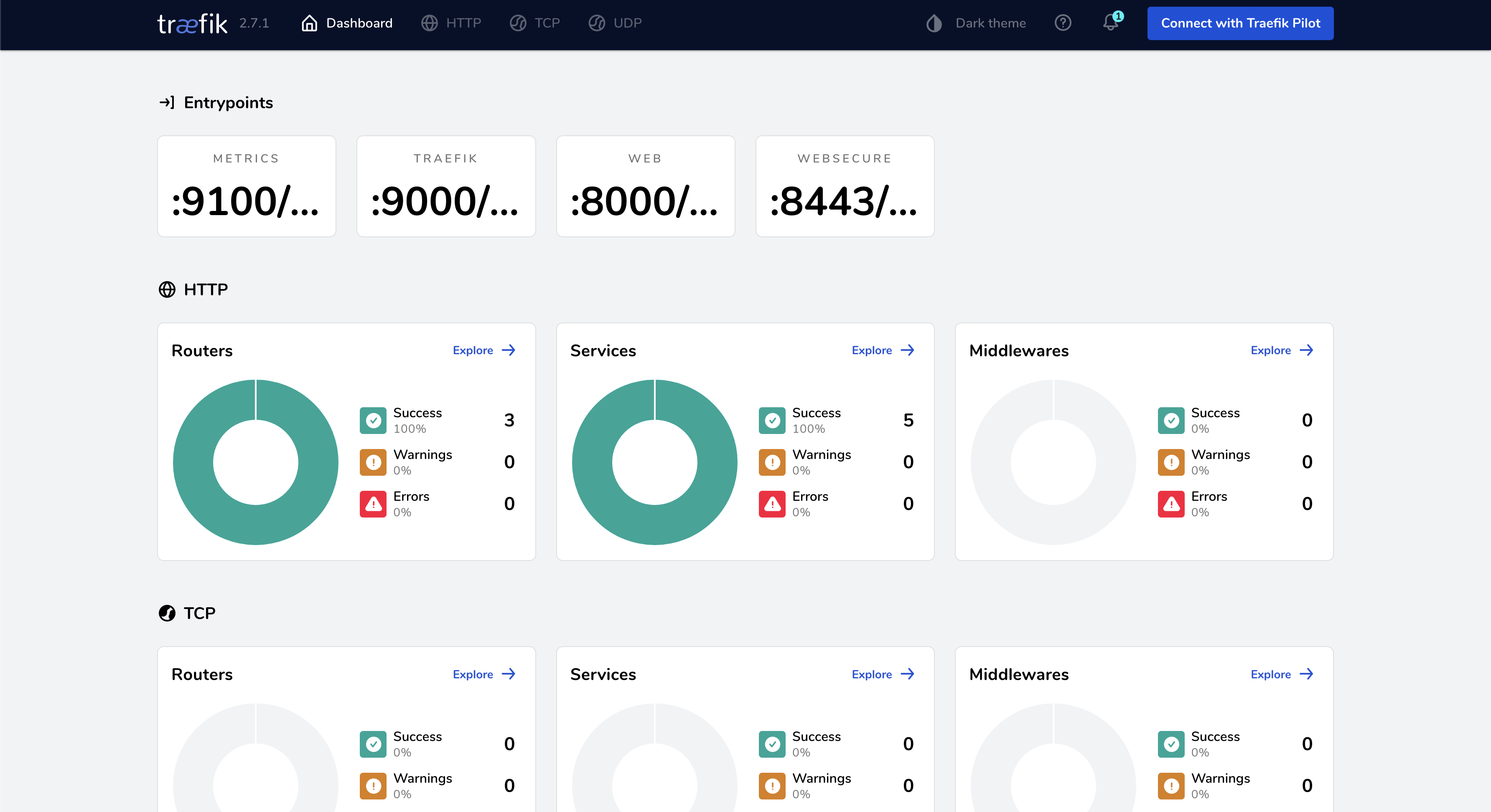This page shows you how to install Minikube, a tool that runs a single-node Kubernetes cluster in a virtual machine on your personal computer. https://kubernetes.io/docs/tasks/tools/install-minikube/ https://kubernetes.io/docs/tasks/access-application-cluster/web-ui-dashboard/
You should have done vagrant up --provision This sets up the base Virtual machine, with some default applications.
Now please do,
vagrant up --provision-with minikube
Bringing machine 'user.local.dev' up with 'virtualbox' provider...
==> user.local.dev: Checking if box 'ubuntu/xenial64' version '20190918.0.0' is up to date...
==> user.local.dev: A newer version of the box 'ubuntu/xenial64' for provider 'virtualbox' is
==> user.local.dev: available! You currently have version '20190918.0.0'. The latest is version
==> user.local.dev: '20191204.0.0'. Run `vagrant box update` to update.
==> user.local.dev: [vagrant-hostsupdater] Checking for host entries
==> user.local.dev: [vagrant-hostsupdater] found entry for: 10.9.99.10 user.local.dev
==> user.local.dev: [vagrant-hostsupdater] found entry for: 10.9.99.10 user.local.dev
==> user.local.dev: Running provisioner: minikube (shell)...
user.local.dev: Running: /var/folders/7j/gsrjvmds05n53ddg28krf4_80001p9/T/vagrant-shell20191212-33841-85girj.sh
user.local.dev: Minicube found at /home/vagrant/minikube
user.local.dev: * Uninstalling Kubernetes v1.17.0 using kubeadm ...
user.local.dev: * Deleting "minikube" in none ...
user.local.dev: * The "minikube" cluster has been deleted.
user.local.dev: * Trying to delete invalid profile minikube
user.local.dev: * Successfully deleted profile "minikube"
user.local.dev: * minikube v1.6.1 on Ubuntu 16.04 (vbox/amd64)
user.local.dev: * Selecting 'none' driver from user configuration (alternates: [])
user.local.dev: * Running on localhost (CPUs=2, Memory=3951MB, Disk=9861MB) ...
user.local.dev: * OS release is Ubuntu 16.04.6 LTS
user.local.dev: * Preparing Kubernetes v1.17.0 on Docker '19.03.5' ...
user.local.dev: - kubelet.node-ip=10.9.99.10
user.local.dev: * Pulling images ...
user.local.dev: * Launching Kubernetes ...
user.local.dev: E1212 05:37:03.427248 10726 kubeadm.go:368] Overriding stale ClientConfig host https://localhost:8443 with https://10.0.2.15:8443
user.local.dev: * Configuring local host environment ...
user.local.dev: *
user.local.dev: - https://minikube.sigs.k8s.io/docs/reference/drivers/none/
user.local.dev: *
user.local.dev: *
user.local.dev: - sudo mv /home/vagrant/.kube /home/vagrant/.minikube $HOME
user.local.dev: - sudo chown -R $USER $HOME/.kube $HOME/.minikube
user.local.dev: *
user.local.dev: * This can also be done automatically by setting the env var CHANGE_MINIKUBE_NONE_USER=true
user.local.dev: * Waiting for cluster to come online ...
user.local.dev: ! The 'none' driver provides limited isolation and may reduce system security and reliability.
user.local.dev: ! For more information, see:
user.local.dev: ! kubectl and minikube configuration will be stored in /home/vagrant
user.local.dev: ! To use kubectl or minikube commands as your own user, you may need to relocate them. For example, to overwrite your own settings, run:
user.local.dev: E1212 05:37:03.517401 10726 kubeadm.go:368] Overriding stale ClientConfig host https://localhost:8443 with https://10.0.2.15:8443
user.local.dev: * Done! kubectl is now configured to use "minikube"
user.local.dev: chmod: changing permissions of 'kubectl': Operation not permitted
user.local.dev: * minikube IP has been updated to point at 10.0.2.15
user.local.dev: W1212 05:37:16.080458 14080 proxy.go:142] Request filter disabled, your proxy is vulnerable to XSRF attacks, please be cautious
user.local.dev: Starting to serve on 10.9.99.10:10888
user.local.dev: host:
user.local.dev: Running
user.local.dev: kubelet: Running
user.local.dev: apiserver: Running
user.local.dev: kubeconfig: Configured
user.local.dev: NAME STATUS ROLES AGE VERSION
user.local.dev: minikube Ready master 16s v1.17.0
user.local.dev: deployment.apps/hello-minikube created
user.local.dev: service/hello-minikube exposed
user.local.dev: http:https://10.0.2.15:30664
user.local.dev: NAME
user.local.dev: READY STATUS RESTARTS AGE
user.local.dev: hello-minikube-797f975945-sr9gg 0/1 Pending 0 0s
user.local.dev: minikube dashboard: http:https://10.9.99.10:10888/api/v1/namespaces/kubernetes-dashboard/services/http:kubernetes-dashboard:/proxy/#/overview?namespace=default
Let's verify that our Minikube is running, we can go to the Dashboard by visiting in your browser:
http:https://10.9.99.10:10888/api/v1/namespaces/kubernetes-dashboard/services/http:kubernetes-dashboard:/proxy/#/overview?namespace=kubernetes-dashboard

From your computer you can interact with kubectl by using vagrant ssh -c "sudo kubectl command"
Like so:
vagrant ssh -c "sudo kubectl get nodes"
NAME STATUS ROLES AGE VERSION
minikube Ready master 59m v1.17.0
Connection to 127.0.0.1 closed.
vagrant ssh -c "sudo kubectl get deployments"
NAME READY UP-TO-DATE AVAILABLE AGE
hello-minikube 1/1 1 1 59m
Connection to 127.0.0.1 closed.
vagrant ssh -c "sudo kubectl get services"
NAME TYPE CLUSTER-IP EXTERNAL-IP PORT(S) AGE
hello-minikube NodePort 10.96.216.129 <none> 10800:30091/TCP 59m
kubernetes ClusterIP 10.96.0.1 <none> 443/TCP 60m
Connection to 127.0.0.1 closed.
Or you can SSH into the VM by doing vagrant ssh and then using sudo do:
sudo kubectl get nodes
NAME STATUS ROLES AGE VERSION
minikube Ready master 63m v1.17.0
k9s is a CLI tool for interacting with k8s clusters. It wraps kubectl functionality to provide a terminal interface for interaction with clusters in an intuitive way.
With the minikube installation k9s is also installed on the Vagrant machine. To run, after provisioning minikube run the following commands:
ssh vagrant
k9s
You should be greeted with the following in your terminal:

Press "0" to display all namespaces.

- Press ":" to bring up command prompt. You can enter commands to change screens. e.g. "deployments" takes you to list of deployments.
- You can navigate around with arrow keys then press buttons as listed in the top right to interact with the highlighted item. e.g "l" to show logs of selected pod.
- For full instructions and preview video see the k9s website: https://k9scli.io/
https://doc.traefik.io/traefik/v1.7/user-guide/kubernetes/
This guide explains how to use Traefik as an Ingress controller for a Kubernetes cluster.
